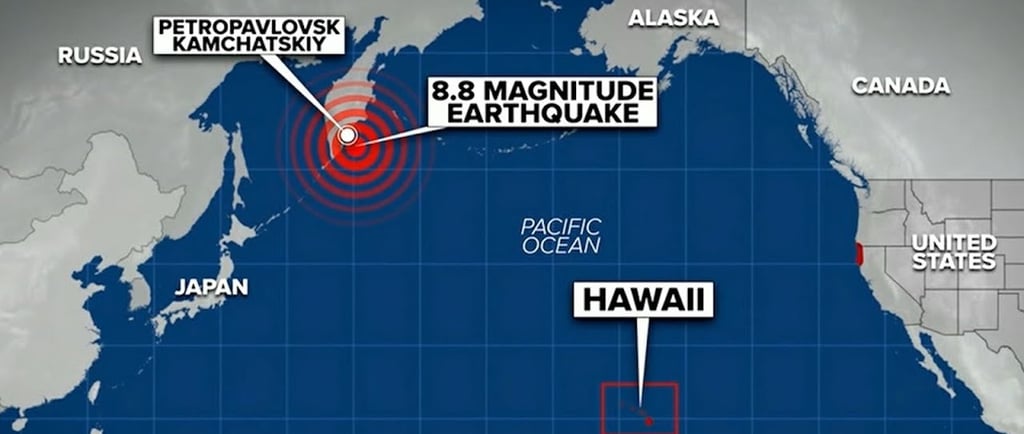Earthquake Tsunami Warnings across Pacific
The magnitude 8.8 earthquake off Russia's Kamchatka Peninsula in July 2025 triggered widespread tsunami warnings across the Pacific.
DIGICULT
7/31/2025


Earthquake Tsunami Warnings
Earthquake and Tsunami Warnings are crucial safety mechanisms implemented worldwide to protect coastal populations from the devastating impacts of tsunamis, particularly those triggered by powerful undersea earthquakes.
How warning systems work and how to stay safe:
Tsunami generation
Tsunamis are most often caused by large, shallow earthquakes that occur near or under the ocean.
The sudden movement of tectonic plates at subduction zones, where one plate slides beneath another, displaces vast amounts of water and triggers a series of waves that radiate outwards.
Underwater or coastal landslides and volcanic eruptions can also trigger tsunamis.
Tsunami warning system components
Sensor networks: A network of seismic stations, bottom pressure recorders (BPRs), and tide gauges detect earthquake activity and changes in sea level that could indicate a tsunami.
Communication infrastructure: Surface buoys transmit data from underwater sensors to tsunami warning centers via satellite.
Warning centers: These centers receive and analyze data, assess the potential for a tsunami, and issue warnings and advisories.
Alert dissemination: Warnings are disseminated through multiple channels like radio, television, weather radios, sirens, mobile alerts, and emergency alert systems.
Tsunami alert levels (in the U.S.)
Tsunami Watch: Indicates that a tsunami is possible and to be aware. Monitor local emergency information and be prepared to take action.
Tsunami Advisory: Indicates that a tsunami with dangerous currents or waves is expected or occurring. Stay out of the water and away from beaches and waterways.
Tsunami Warning: The highest alert level, indicating an imminent or occurring tsunami with potential for widespread flooding. Immediately evacuate to higher ground or inland.
Tsunami Information Statement: An earthquake has occurred, but there is no tsunami threat, or the threat has not been determined.
What to do during a tsunami threat
Natural warnings: If you are near the coast and feel a strong earthquake, see a sudden rise or fall of the ocean, or hear a loud roar from the ocean, move to higher ground or inland immediately.
Official warnings: Heed official tsunami warnings and advisories broadcast through various media channels.
Evacuation: If a tsunami warning is issued, evacuate coastal and low-lying areas to designated safe zones or the highest point available.
Stay informed: Continue monitoring official sources for updates and wait for the "All Clear" before returning to affected areas.
Aftershocks: Be aware that aftershocks are possible and may also generate additional tsunamis.
Recent examples and effectiveness
The magnitude 8.8 earthquake off Russia's Kamchatka Peninsula in July 2025 triggered widespread tsunami warnings across the Pacific.
Rapid detection and dissemination of warnings through systems like the Pacific Tsunami Warning Center (PTWC) enabled millions to evacuate, likely saving many lives.
Despite infrastructure damage and flooding in some areas, the timely response minimized casualties, demonstrating the effectiveness of tsunami preparedness and warning systems.
Tsunami warning systems are essential for mitigating the risks associated with these powerful natural disasters. Understanding the signs of a tsunami, knowing how to respond to official alerts, and actively preparing for such events can significantly enhance safety and resilience in coastal communities.
(This is an AI generated response feed; AI responses may include mistakes. Readers are encouraged to view at their own discretion.)
Ideagiri: Online platform for Education: Govt Colleges and Universities, Govt Jobs, Exams, Internships, Business, Finance, Technology, DigiCult and more - Ideagiri.com
Nocont@ideagiri.com
© 2025. All rights reserved.
